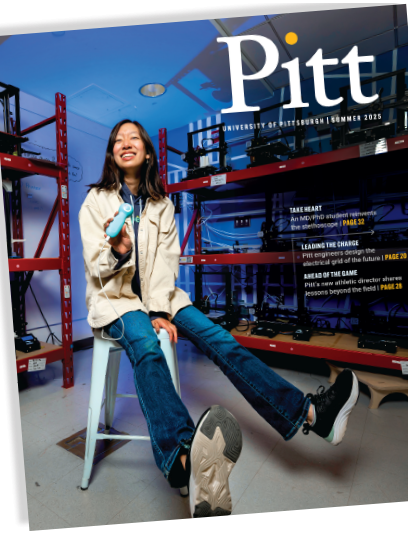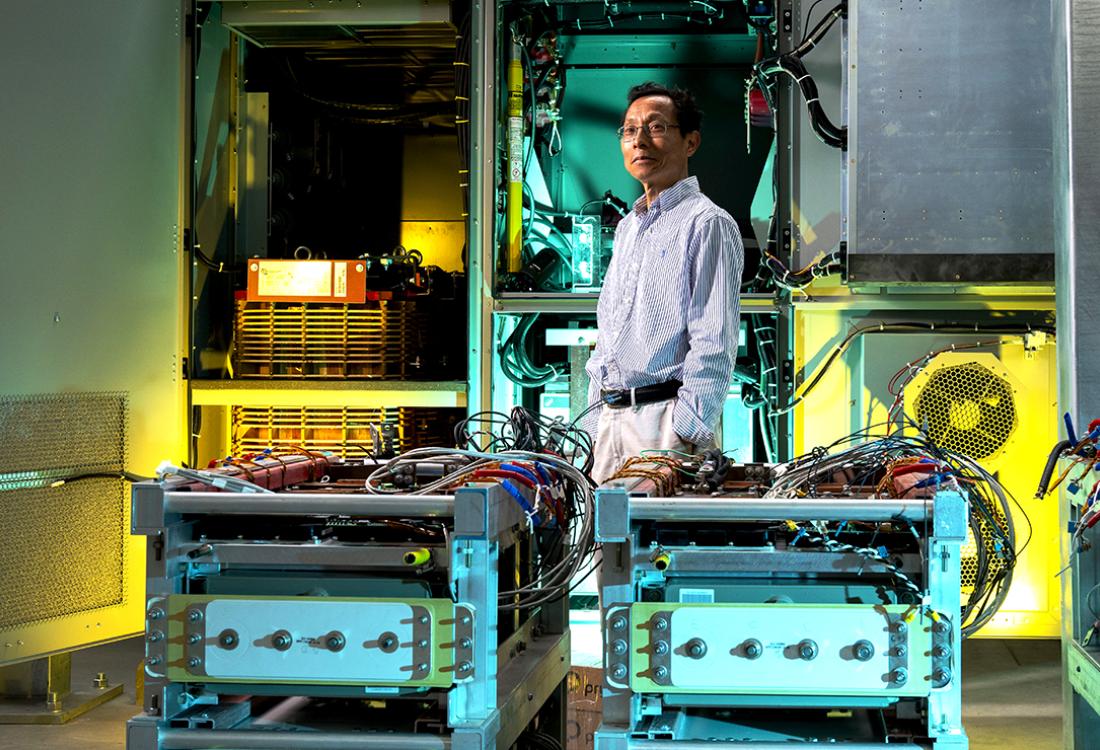
Quick: How charged is your phone? What about your laptop? Your car?
One benefit of the way we live is that it’s usually not too scary if any of them are close to empty. The next charge is just around the corner.
It’s easy to take electricity for granted when so much of the infrastructure that brings it to us is buried behind walls and hidden in boxes, only perceptible when something fails. But peek under the surface and you’ll find a fiendishly complex assortment of aging components that’s been subject to decades of research disinvestment.
We already ask a lot of our electric power grid. Soon we’ll be asking even more.
Electric cars and home heaters are poised to make the way we live cleaner and more efficient. Wind and solar energy promise to further decentralize electricity production and make a dent in the fight against climate change. Artificial intelligence, if you believe tech leaders, is on the cusp of transforming how we work.
It’ll only get harder for the grid to accommodate these innovations while staying reliable. Demand from data centers will double or triple by 2028 according to a U.S. Department of Energy report, and the U.S. Energy Information Administration recently estimated that overall energy demand may double worldwide by 2050.
At Pitt, there’s a team of researchers working alongside industry to prepare for these unprecedented challenges. More powerful batteries, more efficient transformers, more effective sensors — all of these technologies have the potential to make the electric grid more flexible, efficient and resilient.
This push to create the grid of the future harkens back to Pitt’s legacy as an electricity research powerhouse.

Alternating currents
“So, do you want to know the history of how we got from nothing to a program with a national reputation?”
That was how Brandon Grainger started the story, and he’s perhaps positioned better than anyone to tell it. As a three-time Pitt alum (ENGR ’07, ’11G, ’14G), associate professor and Eaton Faculty Fellow in the Swanson School of Engineering, Grainger’s had a front-row seat to the growth of the electric power engineering program at the University since its re-establishment in 2008.
Whether at the scale of a national power grid or a single microchip, power engineering is about making sure electricity gets where it needs to go, in the form it needs to take. That may sound straightforward, but it’s anything but. Powering our homes and devices takes an intricate system of transformers and inductors, power electronics, controllers and more that create branching flows of current in different sizes and varieties, all calibrated to prevent waste, accidents and downtime as they snake their way to their final destinations.
At Pitt, power research owes its origins in part to industrialist George Westinghouse — what Andrew Carnegie was to steel, Westinghouse was to electricity. In 1893, he recruited radio pioneer Reginald Fessenden to be the first chair of Pitt’s Department of Electrical Engineering, eager to see the department train engineers who might work at Westinghouse Electric.
He continued to support the department as it began to graduate students, and the electric power program at Pitt enjoyed an enduring national reputation. But by the early 1990s, funding had dried up. Between 1980 and 1990, the U.S. Department of Energy’s spending on basic energy research was slashed roughly in half.
“In the ’90s, the big thing was computers, and everyone thought the electric power side was all figured out,” Grainger says. “Graduate programs might have one professor, and there were just a couple around the country.”
National interest had moved elsewhere. So did attention at Pitt — for decades.
In 2008, Greg Reed, then a Pitt adjunct professor and vice president at Mitsubishi Electric, saw a looming crisis in both expertise and innovation in the field as the grid continued to age. He also recognized that Pittsburgh was primed for an electric power renaissance.
After recruiting Grainger, then a graduate student, to the effort, the pair began to build out labs and training programs. They found willing workforce development partners in the Richard King Mellon Foundation and Henry L. Hillman Foundation. Industry wanted a piece of the action, too, like international electric distribution manufacturer Eaton Corporation.
“Eaton was the very first manufacturer that came on board and said, ‘We believe in the vision, and we need talent. What can we do to get more engineers into our system?’” Grainger says.
That partnership began in 2008, and within five years, roughly a third of the undergraduates in the Department of Electrical and Computer Engineering were graduating with a concentration in electrical power — and the next stage of the program’s development was just being set into motion.
Fully charged
David Vorp wore his winter coat when he first toured the Hill District building that would become the Energy Innovation Center (EIC). The facility’s windows, vandalized during years of vacancy, were no protection against a Pittsburgh December. But as he wandered through what was once the city’s largest trade school, Vorp — the senior associate dean for research and facilities for the Swanson School — saw possibility among the piled-up desks.
Thirteen years later, that building is now a state-of-the-art facility where researchers from the Swanson School, Duquesne Light Corporation and energy-related startups all solve problems under the same roof.
“Our roots run deep with energy,” says Vorp. “Having this space was the logical next step. Hopefully, our footprint here continues to grow.”
The building hosts five Pitt labs, including the crown jewel of Pitt’s electric power program: the Electric Power Technologies Laboratory, a reconfigurable medium voltage testing space with hookups to solar panels and a wind turbine to test components that assist different types of electric power products.
To know how a product will perform its job in the real world, you have to test it under the conditions it’ll actually experience there. Thanks to Duquesne Light, researchers in the lab can put new grid technologies through their paces at up to 13,800 volts of alternating current directly from the local high-voltage grid, making it one of just three with that capacity east of the Mississippi River.
“Our real-world setups enable us to perform at-scale research, development, testing and validation of new grid technology to modernize today’s power and energy grids,” says lab director Fang Peng. Peng, freshly recruited to Pitt, is a leader in the field boasting patents like a super-fast circuit breaker and a grid component that improves power flow for high-voltage transmission.
Lured by Pitt’s electric power history and unique lab capabilities — along with what he describes as a “renaissance” in power engineering research and education — Peng assumed the role of RK Mellon Endowed Chair Professor of Electrical and Computer Engineering in 2024. Just months later, he was elected to the prestigious National Academy of Engineering.
By working together with industry, agency and academic partners, Peng says, the group is poised to help “rebuild and revolutionize” the electric grid.
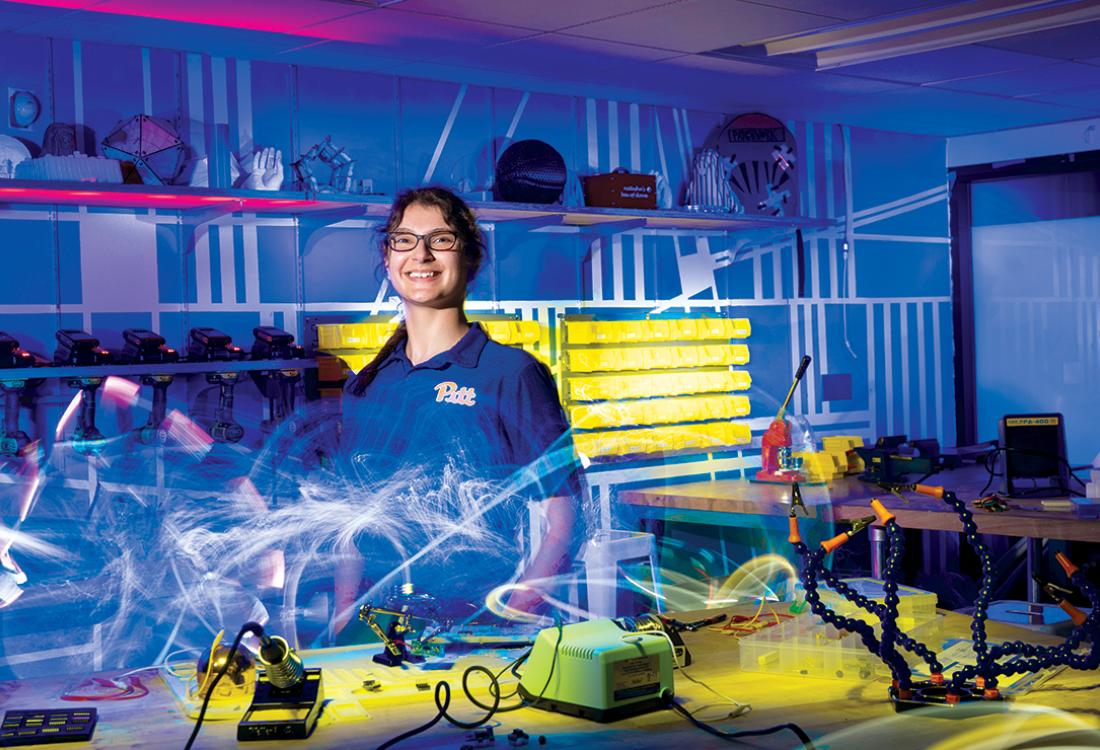
Tomorrow’s grid
Pitt is the EIC’s largest tenant, and other parts of the space are used for workforce development training across 29 different trades. It’s a fitting return for a facility with a previous life as the Connelley Trade School.
“When the school opened in 1930, they were graduating 450 students a year,” says Don Evans, CEO of Pittsburgh Gateways Corporation, the nonprofit that owns and leases the building.
“Today we’re graduating over 900 entry-level jobs every year, doubling down on putting the building back in use and teaching the jobs of the future.”
At the same time, students in the Swanson School are creating the electric grid of the future. Second-year PhD student Sabrina Helbig’s (ENGR ’20, ’23G) interest in power engineering was sparked by a two-week Pitt green energy program in Scandinavia.
“We went to manufacturers, utilities and an offshore wind farm,” she says. “It showed me the breadth of the field and — pun semi-intended — the power that the power grid has in our lives.”
Helbig’s master’s work at Pitt had her designing tiny converters to power computers on spacecraft, and now she’s designing and testing components for the electric grid that could flip the process of how batteries are hooked into the grid.
This work of replacing traditional grid components with new electronics has some real potential advantages: It could alleviate mounting supply chain pressures on transformers and other components while increasing the grid’s efficiency and controllability. It’s an approach Helbig hopes to carry forward to a career in applied research to help the grid accommodate more green technologies.
As vast and vital as the field is — Helbig calls it “invisibly impactful” — she says she thinks about the same questions whether aiming at the entire system, a single substation or one tiny converter.
“What’s its purpose? How can we achieve that safely? And how can we make it better?”
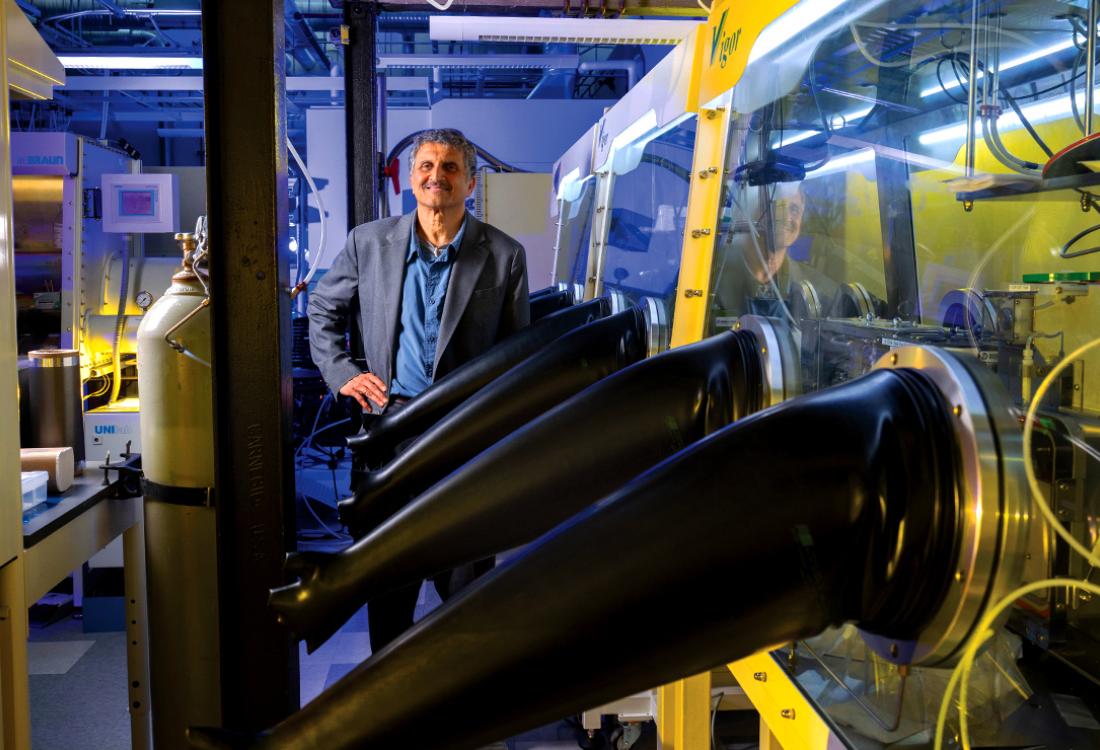
Working to make the grid ...
... More flexible
In 2025, batteries are big business. Even a small increase in capacity means your electric car might drive a few more miles, your phone might last a few more texts, or your solar panel might power your home a few more minutes after sunset. Those minutes add up — and they could make a substantial difference in whether green technologies get adopted.
Prashant N. Kumta, distinguished professor and Edward R. Weidlein Endowed Chair Professor in the Swanson School, wants to see those minutes go up.
Since 1991, Kumta has explored novel ways to safely pack more power into smaller batteries using nanostructures, new chemistries and new approaches for making those materials. Another line of his current research is to reduce the amounts of expensive metals needed to create hydrogen and oxygen to run fuel cells sustainably. His team is also exploring a new battery chemistry that combines lithium and sulfur, which could handily beat the performance of current lithium-ion batteries.
“It has the potential to give you very high energy densities, but anything good always has problems,” he says. In this case: The two elements react to form intermediates that eventually dissolve and kill the battery.
Kumta and his students are researching ways to confine the two substances and prevent the formation of intermediates, all while avoiding the tendency of lithium to form branched treelike structures that short out the battery, rendering it unsafe.
It’s a tough challenge. But if it works?
“The opportunities are endless — because you need batteries for everything,” he says.
... More resilient
Some engineering projects are about dreaming up the electric grid of the future. Others are about making sure the grid we have stays secure.
In SHURE-Grid, the Summer Honors Undergraduate Research Experience in Electric Grid program, Pitt faculty and students research and make educational materials about cybersecurity risks to critical infrastructure like electric grids.
“The idea is to incorporate security at every stage of the engineering system, from conception to deployment,” incorporating principles from the Department of Energy, says Mai Abdelhakim, an associate professor of electrical and computer engineering in the Swanson School and one of SHURE-Grid’s leaders.
The problem of cyber threats is only intensifying: The same tech that’s making the grid more connected and controllable is also increasing the potential avenues for bad actors worldwide to interfere.
“Anybody who works with technology at this point, especially in critical infrastructure, needs at least some minimum awareness of cybersecurity,” says Abdelhakim.
To that end, SHURE-Grid students research and create videos about cyber threats to water dams, renewable energy projects and more that can be shown in classrooms and workplaces. The program, launched in 2023, is sponsored by the U.S. Department of Energy’s Idaho National Laboratory and led by Abdelhakim, Grainger and Robert Cunningham, Pitt’s vice chancellor for research infrastructure.
Last summer, the program hosted 16 students — a few engineers, but also film and media studies, political science and neuroscience majors. SHURE-Grid’s broad nature reflects not just the complexity of the infrastructure we rely on, but how deep it reaches into our lives.
“The security of these critical systems will impact individuals, right?” says Abdelhakim. “If you have a blackout in a city, everyone is impacted.”
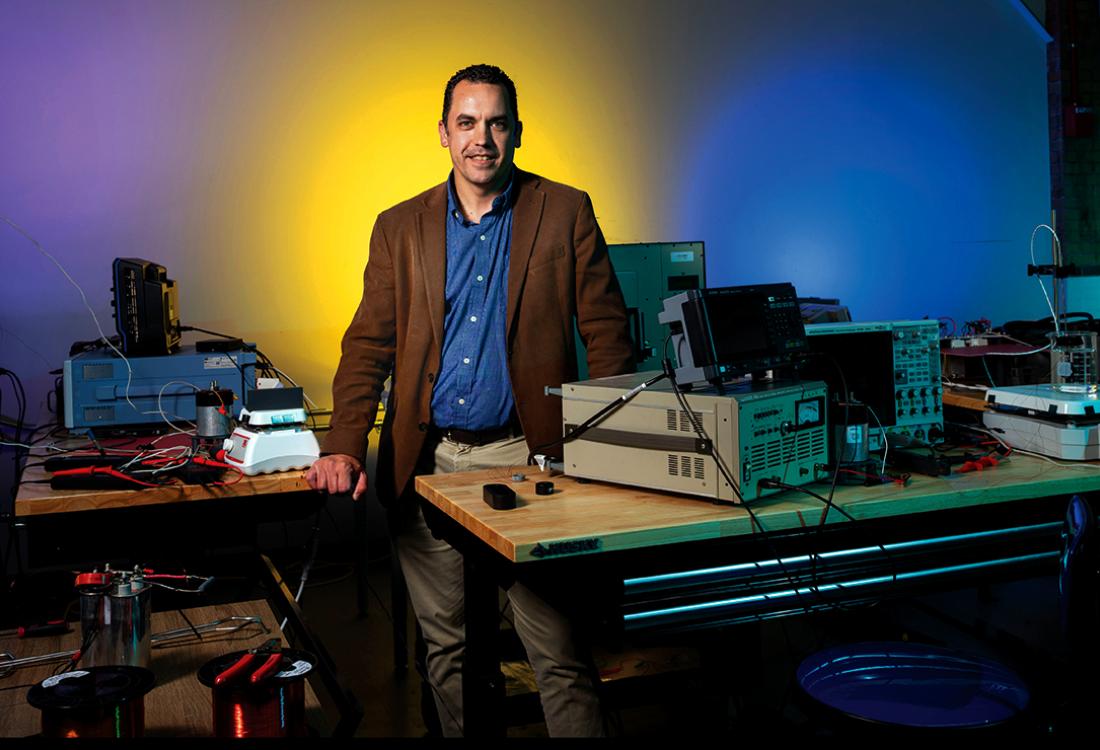
... More efficient
Historically, electricity on the grid only flowed one way: from big power plants to consumers. But with increasing use of energy storage and new types of generation like solar panels, that flow is sometimes reversed, requiring new technologies to handle it. Add efficiency regulations and supply chain issues, and grid components that were once common might quickly become hard to come by.
“All of these different factors are contributing to a much more dynamic, much more challenging environment for the distribution system,” says Mechanical Engineering and Materials Science Associate Professor and RK Mellon Faculty Fellow Paul Ohodnicki.
Ohodnicki is leading a $2.5 million project funded by the Department of Energy that will let researchers in the EIC test new types of distribution transformers, which convert electricity from a form that’s efficient for long-distance travel to a safer one that won’t fry your appliances. He’s also assembling a group of academics and industry representatives who’ll ensure that the lab’s research is useful to the companies building, supplying and administering the electric grid.
The work will take advantage of the high voltage capacity of the EIC.
“The lab actually has multiple distribution transformers that can operate all the way up to the same voltage levels that they might see on the distribution grid,” Ohodnicki says. “That immediately provides us with a unique lab-based test facility that would otherwise be very difficult to gain access to.”


